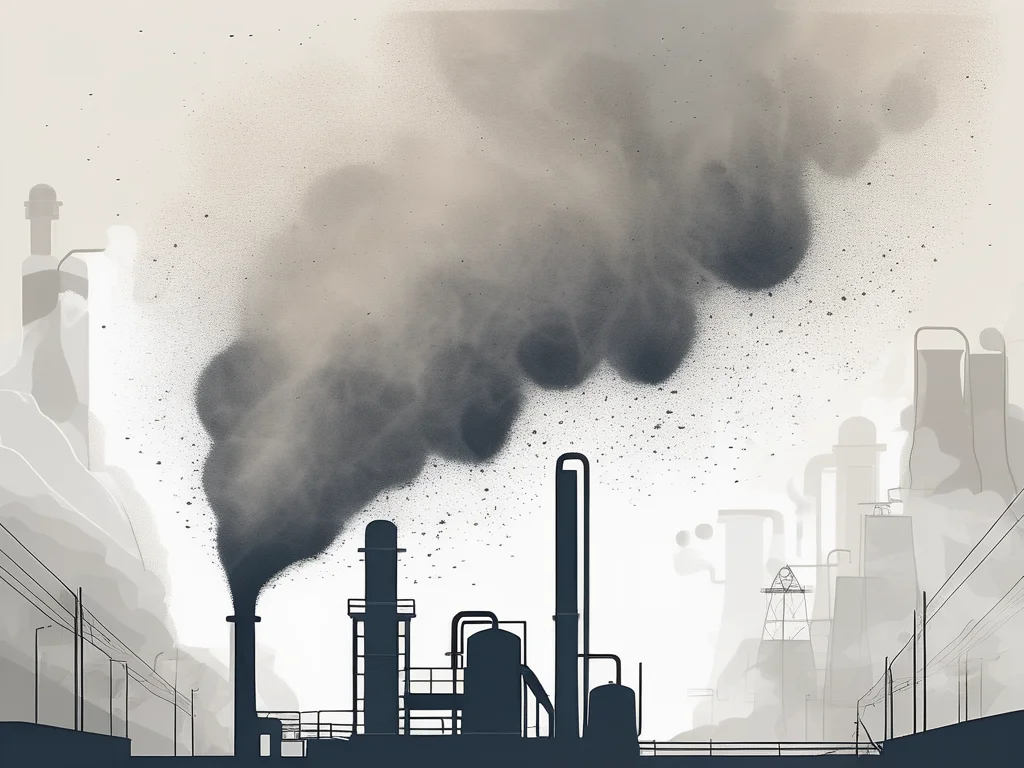Silica dust exposure is a critical occupational health concern, leading to silicosis, a debilitating lung disease caused by inhaling crystalline silica particles. Workers in specific industries face heightened risks due to frequent contact with silica-containing materials. This blog identifies the industries most susceptible to silica dust exposure, explores associated risks, and outlines preventive measures to protect workers. By understanding these hazards, employers and employees can implement effective safety protocols to reduce the incidence of silicosis.
What Is Silicosis and Why Is It a Concern?
Silicosis results from inhaling fine crystalline silica dust, which triggers lung inflammation and scarring, known as pulmonary fibrosis. This condition impairs lung function, causing symptoms like persistent cough, shortness of breath, chest pain, and fatigue. If untreated, it can lead to severe complications, including respiratory failure, chronic obstructive pulmonary disease (COPD), or lung cancer. Industries involving activities like cutting, grinding, or drilling silica-containing materials—such as stone, concrete, or rock—are particularly at risk. Early detection and prevention are vital to managing this occupational hazard.
Which Industries Face the Highest Risk of Silica Dust Exposure?
Several industries expose workers to silica dust due to the nature of their operations. Below are the primary sectors at risk:
1. Mining Industry
Mining, particularly in coal, metal, and stone quarries, involves drilling, blasting, and crushing silica-rich materials. Miners are directly exposed to airborne silica particles, making this industry one of the highest-risk sectors for silicosis. Without proper ventilation or protective equipment, the risk escalates significantly.
2. Construction Industry
Construction workers, including masons, concrete cutters, and demolition crews, frequently handle materials like concrete, brick, and stone. Activities such as cutting, grinding, or sandblasting generate silica dust, putting workers at risk if safety measures like wet cutting or respiratory protection are not utilized.
3. Manufacturing and Foundries
Manufacturing processes, such as glass production, ceramics, and foundry work, involve silica-based materials. Workers handling raw materials or operating machinery that cuts or grinds silica-containing products face significant exposure risks.
4. Sandblasting and Abrasive Blasting
Sandblasting, common in shipyards, auto body shops, and surface preparation, uses silica-based abrasives. Without proper containment or respiratory protection, workers inhale harmful dust, increasing their silicosis risk.
5. Stone-Cutting and Quarrying
Stone cutters and quarry workers deal with granite, sandstone, and other silica-rich stones. Cutting, shaping, or polishing these materials releases fine silica particles, posing a severe health hazard.
6. Adjacent Occupations
Workers not directly handling silica but involved in maintenance, cleaning, or renovation in silica-related environments are also at risk. For instance, cleaning equipment used in silica processes or working in poorly ventilated areas can lead to unintentional exposure.
How Does Silica Dust Affect Workers’ Health?
Silica dust penetrates deep into the lungs, causing inflammation and scarring that impair respiratory function. Over time, this leads to:
- Pulmonary Fibrosis: Scarring reduces lung elasticity, hindering oxygen exchange.
- Increased Infection Risk: Damaged lungs are more susceptible to infections like tuberculosis.
- Chronic Respiratory Conditions: Prolonged exposure may cause COPD or lung cancer.
- Exacerbated Pre-existing Conditions: Smokers or those with asthma face worsened symptoms.
Workers in high-risk industries must use protective measures to minimize these health impacts.
What Are the Symptoms of Silicosis?
Silicosis symptoms develop gradually and include:
- Persistent cough
- Shortness of breath
- Chest pain
- Fatigue
- In severe cases: weight loss, fever, or respiratory failure
Early recognition of these symptoms is crucial for timely diagnosis and intervention, especially for workers in high-risk industries.
How Can Silicosis Be Diagnosed?
Diagnosing silicosis involves a combination of medical history, physical exams, and diagnostic tests, including:
- Chest X-rays: Reveal characteristic “eggshell” calcifications or opacities in the lungs.
- CT Scans: Provide detailed images of lung damage.
- Pulmonary Function Tests: Measure lung capacity (FVC and FEV1) to assess respiratory impairment.
- Blood Gas Analysis: Evaluates oxygen and carbon dioxide levels in the blood.
Early diagnosis helps manage the disease and prevent further progression.
What Safety Measures Can Prevent Silica Dust Exposure?
Preventing silicosis requires proactive workplace safety measures, including:
1. Engineering Controls
- Ventilation Systems: Use local exhaust ventilation to capture dust at the source.
- Wet Methods: Apply water during cutting or grinding to suppress dust.
- Enclosed Work Areas: Isolate high-dust activities to limit exposure.
2. Personal Protective Equipment (PPE)
- Provide respirators and protective clothing to workers.
- Ensure proper fit and maintenance of PPE.
3. Training and Education
- Train workers on silica dust hazards and safe practices.
- Promote awareness of symptoms and the importance of health screenings.
4. Regular Monitoring
- Conduct air quality assessments to ensure silica dust levels are within permissible limits.
- Implement health surveillance programs to detect early signs of silicosis.
What Are the Long-Term Effects of Silica Dust Exposure?
Chronic silica dust exposure can lead to irreversible lung damage, reducing quality of life. Long-term effects include:
- Permanent lung scarring
- Increased risk of respiratory infections
- Development of COPD or lung cancer
- Emotional and psychological challenges due to physical limitations
Raising awareness about these consequences is essential for fostering safer workplaces.
Are There Treatment Options for Silicosis?
While silicosis is incurable, treatments focus on symptom management and improving quality of life:
- Medications: Bronchodilators, corticosteroids, or antibiotics to manage symptoms and infections.
- Lifestyle Changes: Smoking cessation and regular exercise to support lung health.
- Oxygen Therapy: For severe cases to improve breathing.
Early intervention can slow disease progression and enhance patient outcomes.
What Legal Rights Do Silicosis Victims Have?
Workers diagnosed with silicosis may be entitled to compensation for workplace exposure. Legal rights vary by region but often include:
- Workers’ Compensation: Covers medical expenses and lost wages.
- Employer Accountability: Lawsuits against employers for inadequate safety measures.
- Advocacy Support: Legal and support networks assist victims in navigating claims.
Consulting a legal professional is crucial for understanding and pursuing these rights.
How Can Advocacy and Education Reduce Silicosis Risks?
Raising awareness through education and advocacy is key to preventing silicosis. Efforts include:
- Worker Education: Informing employees about silica hazards and safety practices.
- Employer Training: Encouraging compliance with safety regulations.
- Public Campaigns: Collaborations between governments, non-profits, and healthcare providers to promote health screenings and safe workplaces.
These initiatives can significantly reduce silicosis cases and improve occupational health.
What Innovations Are Improving Silicosis Management?
Ongoing research is advancing silicosis prevention and treatment:
- Improved Diagnostics: Enhanced imaging and testing for early detection.
- New Treatments: Exploration of gene therapy and regenerative medicine.
- Preventive Technologies: Development of advanced dust suppression systems.
Collaboration among researchers, medical professionals, and industry stakeholders drives these advancements.
Conclusion
Industries like mining, construction, manufacturing, sandblasting, and stone-cutting face the highest risk of silica dust exposure, leading to silicosis. This lung disease poses severe health risks, but proactive measures—such as engineering controls, PPE, and worker education—can significantly reduce exposure. Early diagnosis, treatment, and advocacy further support worker safety. By prioritizing prevention and raising awareness, employers and workers can create safer environments, minimizing the devastating effects of silicosis.



